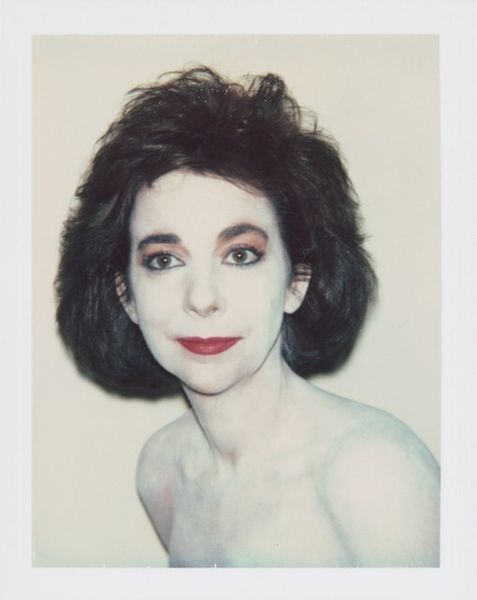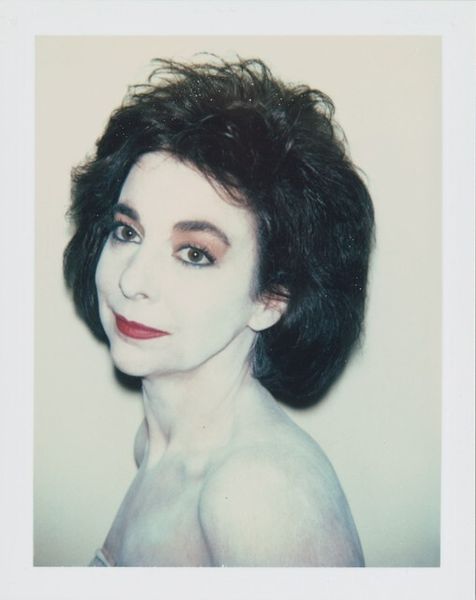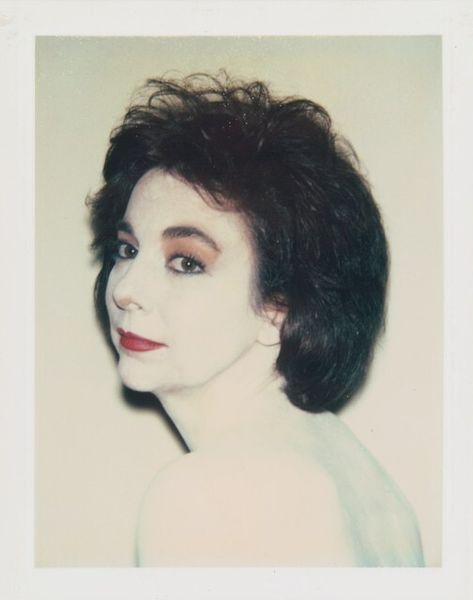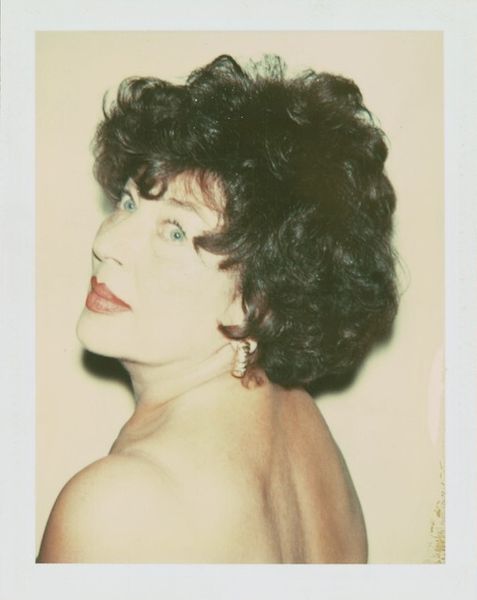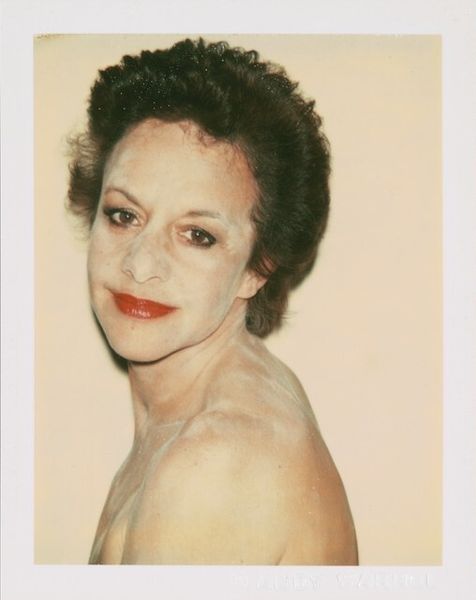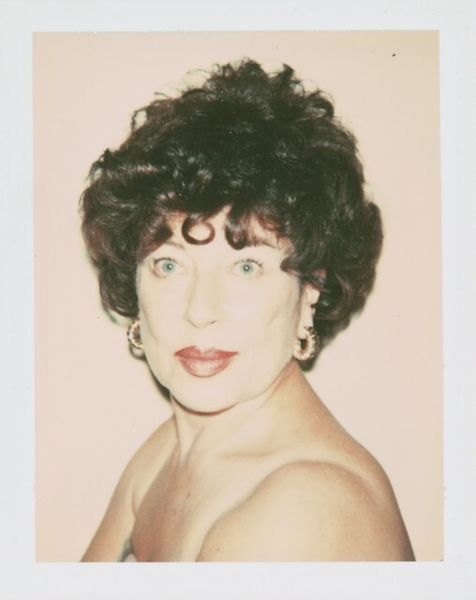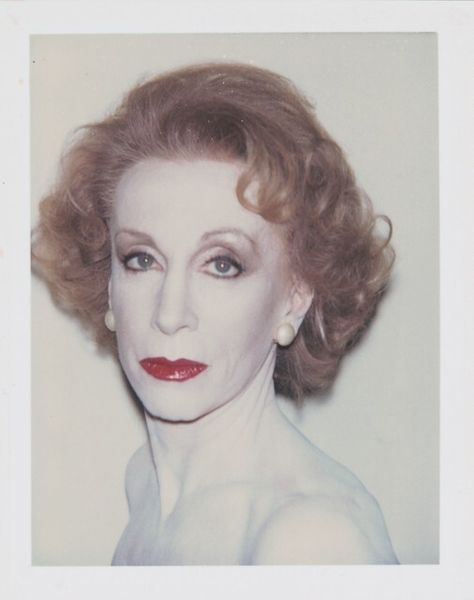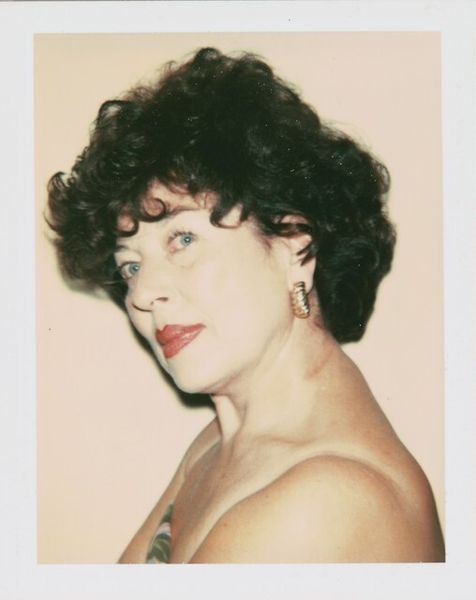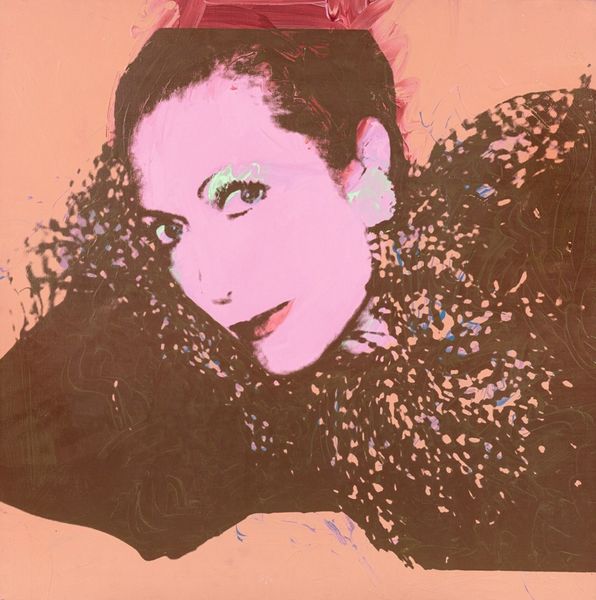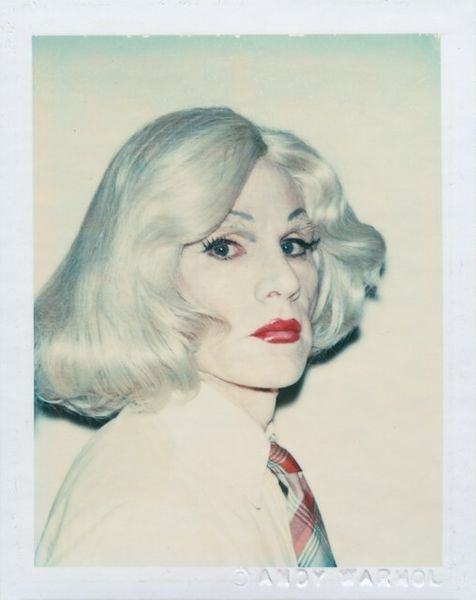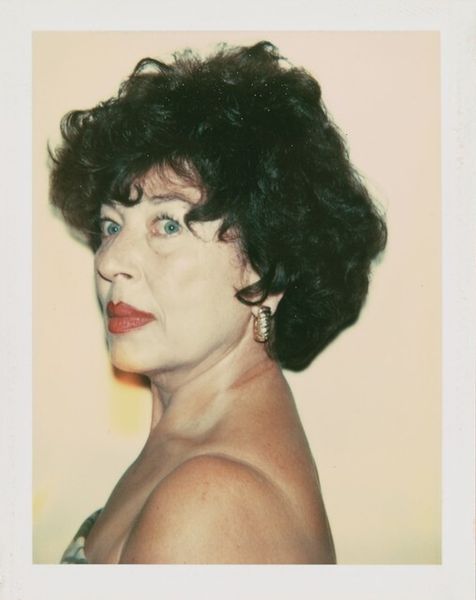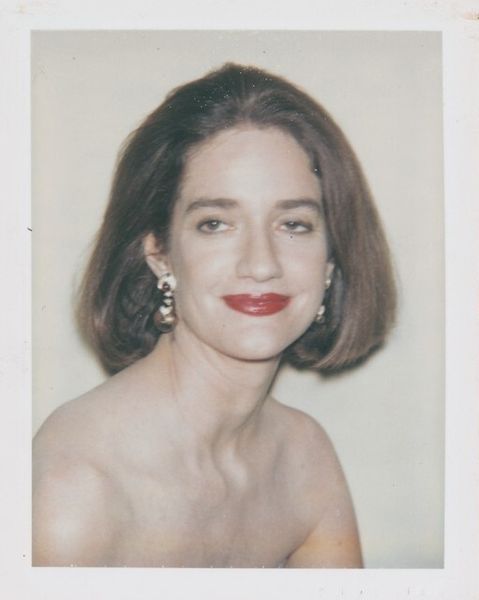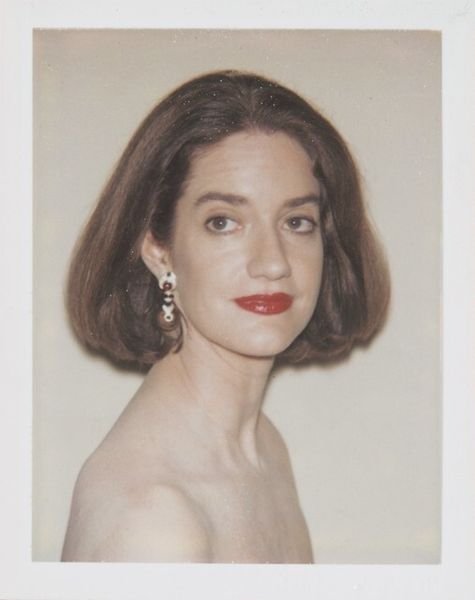
Dimensions: image: 9.5 × 7.3 cm (3 3/4 × 2 7/8 in.) sheet: 10.8 × 8.6 cm (4 1/4 × 3 3/8 in.)
Copyright: National Gallery of Art: CC0 1.0
Curator: Before us hangs Andy Warhol’s “Mrs. George (Sarah) Goldsmith,” a C-print photograph created in 1985. What are your initial thoughts? Editor: My first reaction is one of stark contrast. The ghostly pale face against the bold, dark hair and the slash of bright red lipstick creates a dramatic, almost theatrical effect. It has the immediacy of a snapshot but the intensity of something meticulously staged. Curator: Absolutely. The image reflects Warhol’s preoccupation with fame and identity, particularly within the context of high society. The stark white skin evokes classical theatre makeup. Perhaps a sense of masking or the creation of an artificial persona? Editor: You can definitely read it that way. Formally, the flat planes of color and the high contrast contribute to a flattened sense of space, denying depth and focusing attention solely on the surface. It mirrors that concept of artificiality—an image carefully constructed for public consumption. Curator: It reminds me a bit of the Kabuki traditions, the idea that through the mask or through the constructed image, one is perhaps showing something that they deeply identify with within. Think about the emotional context of the 80s: was the artifice reflecting deep shifts of internal values, do you think? Editor: I see your point, although I'd say that is open for debate. Semiotically, that splash of red is almost rebellious in its simplicity within what feels like a study in negative color. But is it simply an attention grabber? It certainly catches the eye first. It could reflect a lot about a particular cultural shift and personal power, in an era defined by image and appearances. Curator: That push and pull between the outer performance and an internal value, for Warhol, felt so resonant in many traditions of portraiture as it evolved for hundreds of years. But here, in his distinct style and period, that feels both new and quite ancient. Editor: And to appreciate that friction, one must embrace both our takes: how its elements work in concert *and* what we think about as humanity facing those big questions through the portrait for centuries. Thanks! Curator: An inspiring thought to depart with.
Comments
No comments
Be the first to comment and join the conversation on the ultimate creative platform.
